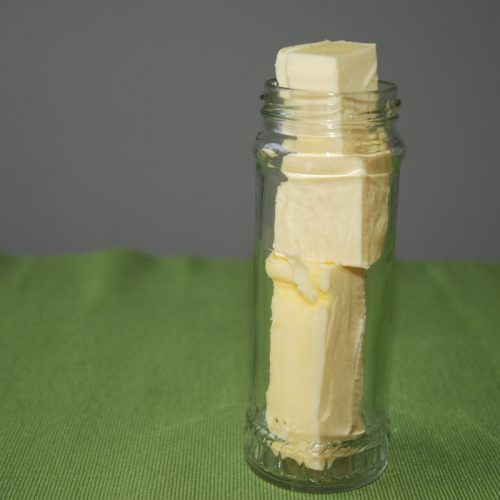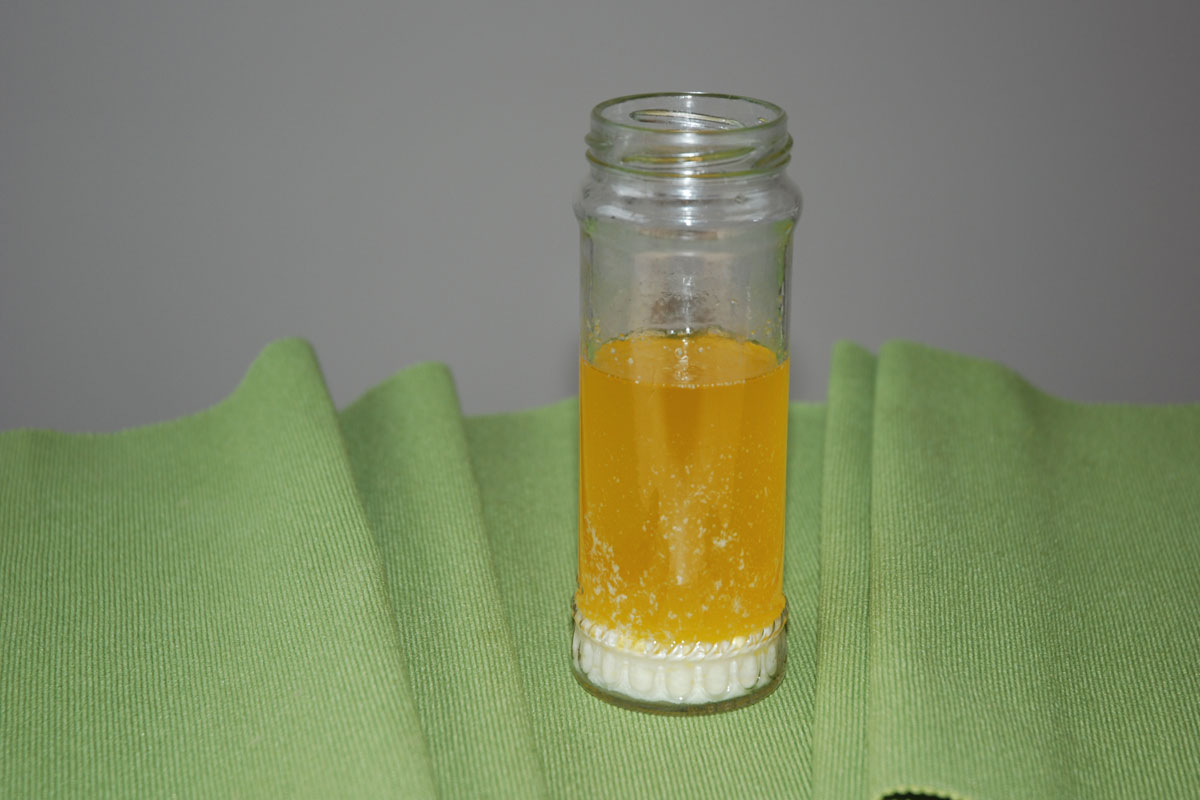It is very easy to make clarified butter or butter fat (ghee) yourself at home. And ghee performs to a higher temperature than butter, without becoming brown (up to 190 C). Ghee is probably the best example of a refined oil or fat.
The art of making ghee
Butter is a dispersion of 15% buttermilk in 85% butter fat. The buttermilk contains proteins, butyric acid and mineral rich water. Ghee, the pure butter fat, is free from water soluble proteins. These cause butter to become brown and black when heated due to the Maillard reaction, see Knowledge, Food chemistry in action when we cook). So ghee can tolerate higher temperatures than butter, without smoking or becoming brown. This is essential for making Indian and middle eastern dishes where we cook spices in the oil to release their fragrance and aroma.
In addition, when making butter-based, emulsified sauces (such as hollandaise or béarnaise sauce) it is better to add only the butter oil rather than butter itself. Because adding melted butter is not as effective in thickening the sauce than adding pure butter fat. As adding butter does not increase the ratio of oil to water much.
Ghee you can store in the refrigerator for several months and in the freezer for much longer.
Making ghee by melting butter is the most simple and basic example of a refined oil or fat (removing the butyric acid, water and proteins, rendering a more stable fat).
Special equipment
- Glass jar (taller, narrow shape is slightly preferred),
- Oven or pan with very hot water

Ghee, clarified and refined butter
Ingredients
Ingredient
- 7 oz (200 g) unsalted butter
Instructions
Instructions
- Place sticks of butter in the jar
- Put the jar in a 100 C oven, for about 30-40 min. Alternatively, place the jar in a pan with very hot water (90 C). The jar should show at this time a clearly separated and transparent oil layer on top (85%) and a watery layer (15%) at the bottom
- With a mitt or cloth, carefully take the jar from the oven or water bath
- Pour the butter oil layer in a separate container or jar and save for making butter based sauces or for frying. Make sure no watery phase comes along
- Then pour the remainder (watery lower layer possibly with some of the butterfat) in a small bowl and place in the refrigerator. When cooled down, the last remaining butterfat can be scooped off when it has solidified. It can be used for fryingThe water phase can be actually consumed. It consists of a slightly viscous, slightly sour milk: this is buttermilk!
Notes
Remarks
- Salted butter could actually also be used, but the separated buttermilk will become too salty to drink



